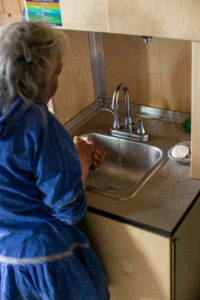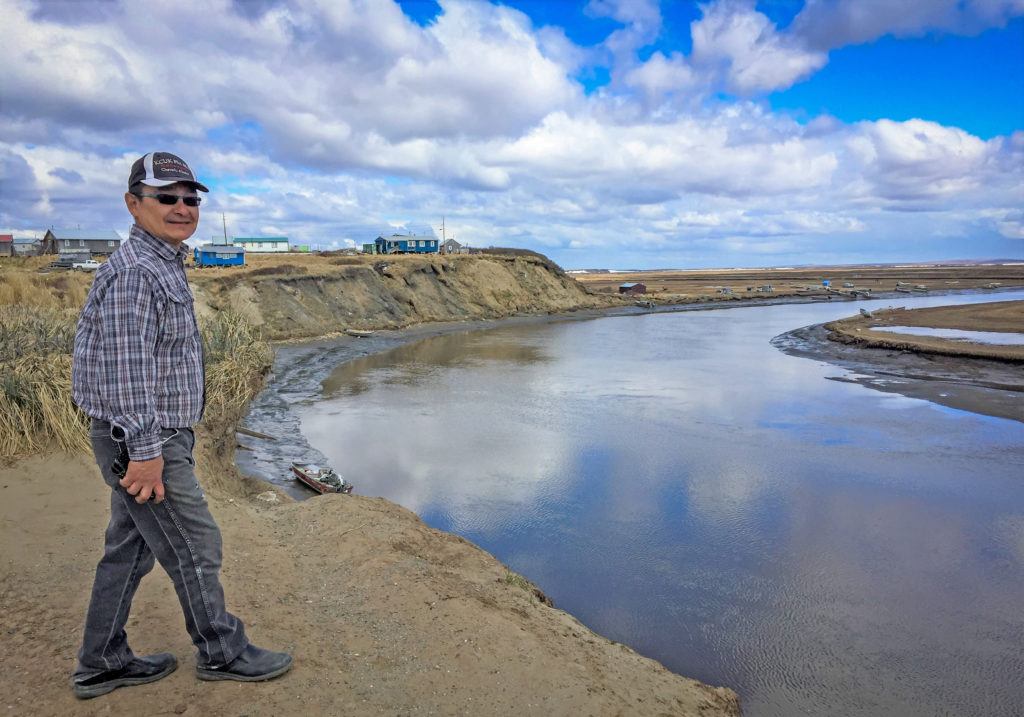Statewide Services 2021 highlights

Health and prevention activities in communities across Alaska
The Alaska Native Tribal Health Consortium understands that the health of our people is rooted in the strengths of our traditional values and culture, our families and communities. Despite the vastness of Alaska and unique features found among different regions, we come together, like tributaries flowing into a single body of water, in the desire for the better health of our people.
Our resilience and spirit flow throughout Alaska and are the essence of our people. And like many of the rivers that bring life to our communities, sometimes obstacles will arise and make them forge a new direction, adapting to their environment. Just like a river, we will continue to move forward, prosper and thrive, despite any challenge, stronger in this new landscape.
So, we work together with regional Tribal health organizations and the state to create a better stream of health by: setting health priorities based on data; education for dental therapists; understanding trauma through an interactive walk across history; construction projects that increase access to sewer and water; and making it easier for patients outside of Anchorage to navigate our services.
Mini PASS units installed in Stebbins
Ten Mini Portable Alternative Sanitation System (PASS) units were installed in Stebbins, a community of about 575 people located on St. Michael Island in the Norton Sound region.
The Mini PASS, a smaller, easier to transport version of original, is composed of two components: a handwashing cabinet and ventilated honey bucket. The handwashing cabinet allows for an in-home faucet for running water and is designed for areas where families typically use washbasins. The toilet comes with a ventilation system that includes a fan to pull odors out of the home. The Stebbins Mini PASS Project was funded by a private donor through the CDC Foundation.
Read the original story from September 2021 here: ANTHC delivers and installs Mini Portable Alternative Sanitation Systems in Stebbins
Chevak: A success story in Tribal utility partnership
Chevak was an early member of the Alaska Rural Utility Collaborative (ARUC), but the community recognized the advantages of working together to manage, operate and maintain their water and sewer systems. For Chevak, the partnership with ARUC has resulted in nearly 50 percent reductions in water and sewer costs for residents, a robust reserve account and a more efficient and self-sustaining system.
Over the years, they have gone from more than $200,000 in debt to having over $500,000 in reserves in 2020. These reserves fund needed equipment, overages in labor, and emergencies.
Projects over the years have included partnering with ANTHC on technical assistance in 2013 for technical assistance to develop new ways to save on system operations and maintenance that led to substantial yearly savings and a healthy, growing reserve fund. In 2018, Chevak collaborated with ANTHC’s Rural Energy Program on a heat recovery project. Where the community had previously used an average of 15,000 gallons of fuel per year, the heat recovery system saves an estimated 12,500 gallons annually. Customer water rates dropped from $165 a month to just $85 a month and are some of the lowest among the ARUC communities.
“Chevak has been an amazing success regarding financial stability due to implemented energy projects and utility collections,” said Francine Moreno, ANTHC Manager of Utility Operations.
Read original story from January 2021 here: Chevak: A success story in Tribal utility partnership
Connecting with community health and wellness in new ways
Our Community Health Services programs connect our rural communities and Tribal partners to wellness and prevention services. Typically, these connections are made in person through training, events, outreach and community visits. However, the COVID-19 pandemic has challenged our programs to find innovative ways to improve the overall wellness of our people.
Over the past year, ANTHC programs used both emerging technology and traditional ways to share health information. During May’s Mental Health Awareness Month and September’s Suicide Prevention Awareness Month, the Injury Prevention Program hosted online wellness activities and contests, a virtual health fair and mailed care packages to Tribal health partners. The Domestic Violence Prevention Program created a video PSA that ran on television and social media during October’s Domestic Violence Awareness Month and created a human trafficking awareness campaign that ran on digital platforms, print ads and on buses in Anchorage. The Substance Misuse Prevention Program used traditional storytelling through online videos to celebrate stories of recovery and sobriety for Recovery Month in March and made Narcan kits available by mail to help prevent opioid overdoses. The Tobacco Prevention Program held a Facebook event with educational videos, interactive quizzes, scavenger hunt and prizes during the Great American Smokeout in November. The I Know Mine Program used social media ads to connect their key audience to sexually transmitted infection prevention resources and testing kits, and created an online ad campaign to promote harm reduction, a compassionate way to end substance misuse.




